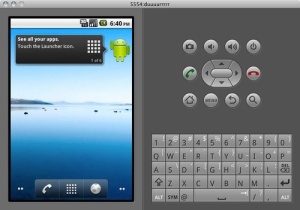Posted tagged ‘mobile applications’
November 4, 2012

No doubt that you’ve heard Mark Zuckerberg’s mea culpa regarding the use of HTML5 for their mobile platform. He felt that they put too much of their strategy behind HTML5 and that they couldn’t get the performance that they could get from native apps on iOS and Android. He even went so far as to cite it as “one of the biggest mistakes, if not the biggest mistake” that Facebook has ever made. From a technical perspective, here is a link to a good article about the technology challenges encountered by Facebook along with comments from other technologists outside of Facebook.
On the other hand, LinkedIn’s iPad application claims to be 95% HTML5, and it is quite impressive. The application is quite responsive. The updates area appears as headlines a la Flipboard which gives your connections a bit of star quality.
How can two similar products (social networks) utilize the same technology and come up with different conclusions?
(more…)
Categories: html5, Mobile Applications, native
Tags: android, html5, ipad, media tablet, mobile applications, native, smartphone
Comments: Comments Off on The Votes are in on HTML5 and Mobile: LinkedIn, Yea; Facebook, Nay
March 4, 2012

I often hear people describe the mobile computing industry as ‘immature’. For some reason, this really irks me. Cell Phones and PDAs have been popular since the 90’s and smartphones started gaining momentum in the early 2000’s. Now, of the 7 billion people in the world, nearly 6 billion of them have a cellular subscription (Source: ITU).
(more…)
Categories: BYOD, Mobile Applications, smartphone
Tags: BYOD, consumerization of it, mobile, mobile applications, smartphone
Comments: 4 Comments
February 4, 2012

We’ve been using computers to enhance our world for many years. We’ve even used computers to built our own imaginary worlds through the magic of virtual reality. Augmented reality (AR) is the use of virtual reality in combination with the real world to provide an enhanced experience for the user. One of the more common examples is in football (the US version) where a computer-generated line is shown on television for the first down marker. As real world items (players, objects) pass in front of it, the portion of the line that would be behind the item disappears (called occlusion). It has been featured in several sci-fi flicks such as the Predator movies, the Terminator series, Minority Report, Avatar and the Iron Man movies.
(more…)
Categories: Augmented Reality, Media Tablet, Mobile Applications, smartphone
Tags: augmented reality, media tablets, mobile applications, smartphones
Comments: Comments Off on Augmented Reality and Mobile: The New Reality
December 4, 2011

Mobile device management (MDM) is a hot area with enterprises today. Gone are the days of IT dictating the devices, or even the operating systems. The complexity of managing multiple mobile platforms has brought this cottage industry into the mainstream. For proof, look no further than the dozens of MDM product offerings. As the name implies, these products focus on managing (and securing) mobile devices.
(more…)
Categories: BYOB, mobile application management, Mobile Applications, Mobile Device Management, smartphone
Tags: BYOB, mobile application management, mobile applications, mobile device management, smartphone
Comments: 1 Comment
October 4, 2011
When developing code for mobile devices, it’s always good to test it out on the targeted device(s). However, it’s not always convenient or cost-effective to have access to the real thing. That’s where mobile device emulators and simulators come into play.
(more…)
Categories: Android, BlackBerry, iOS, Media Tablet, Mobile Applications, mobile thick client, mobile thin client, smartphone, Symbian, Uncategorized, Windows Mobile, Windows Phone 7
Tags: android, iOS, media tablet, mobile, mobile applications, mobile thick client, mobile thin client, smartphone, symbian, windows mobile, windows phone
Comments: 1 Comment
July 4, 2011

Most people think of two types of mobile applications: the mobile web and native applications. The mobile web is obviously web sites that are optimized for mobile devices, like feature phones, smartphones, and now media tablets. Their strength is that many developers are fluent in web-based development languages and tools. Their weakness is you don’t have access to most hardware features (camera, accelerometer, sensors, etc.). Native applications are developed for a specific OS platform using the associated software development kit (SDK). Their strength is that you can leverage those hardware features previously mentioned. Their downside is that you have to write different code for each mobile OS (like Objective-C for iOS devices and Java for Android).
Another application type which is growing in popularity is known as a hybrid mobile application. The idea is that you can leverage common web technologies (HTML, CSS, and JavaScript) but get the experience of a native application. (more…)
Categories: Hybrid Mobile Applications, Mobile Applications, mobile thick client, mobile thin client
Tags: hybrid, mobile applications, mobile thick client, mobile thin client, smartphone
Comments: Comments Off on Hybrid Applications: A Marriage of Mobile Application Architectures
June 4, 2011

Well, Apple did it again. On April 3, 2010, they unleashed the iPad, a thin, sleek, tablet that has excited consumers around the world. It borrowed a lot from its little sibling, the iPhone, including compatibility with mobile applications in the Apple App Store. Just to give you some perspective, it took 74 days to sell one million iPhones. We know how that product revolutionized the smartphone industry. It took only 28 days to sell one million iPads. Simply amazing.
(more…)
Categories: Android, BlackBerry, Individual Liable Devices, iPhone, Media Tablet, mobile thin client, WebOS
Tags: android, blackberry, individual-liable, ipad, iphone, media tablet, mobile, mobile applications, mobile thin client, smartphone
Comments: Comments Off on Media Tablets in the Enterprise: Consumerization of IT Strikes Again






